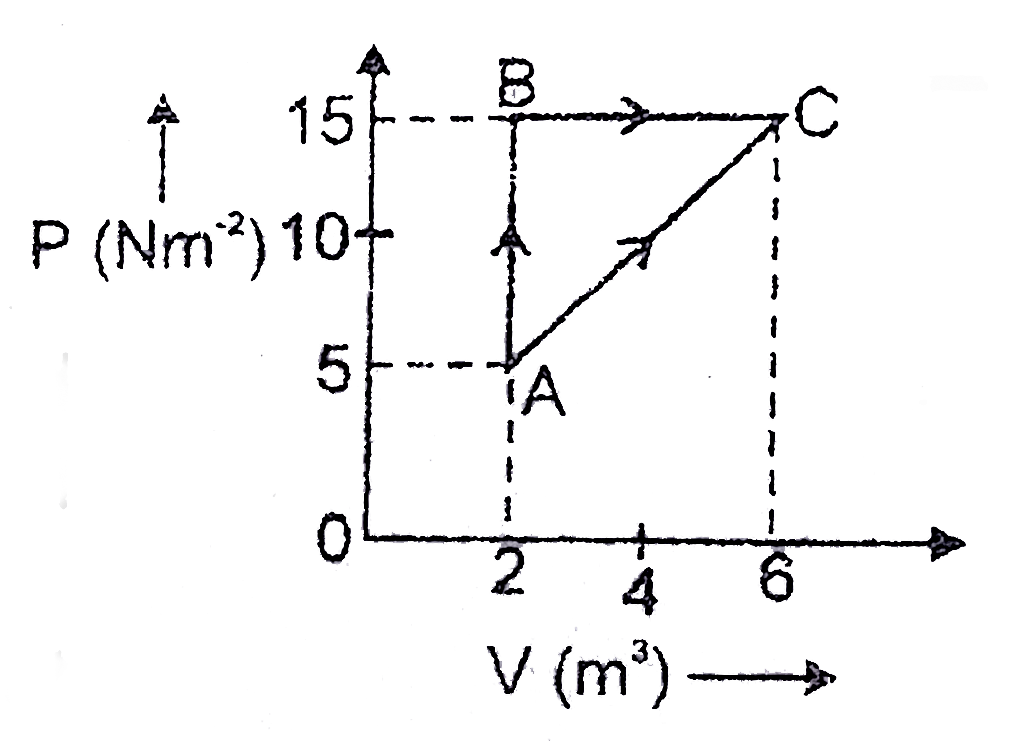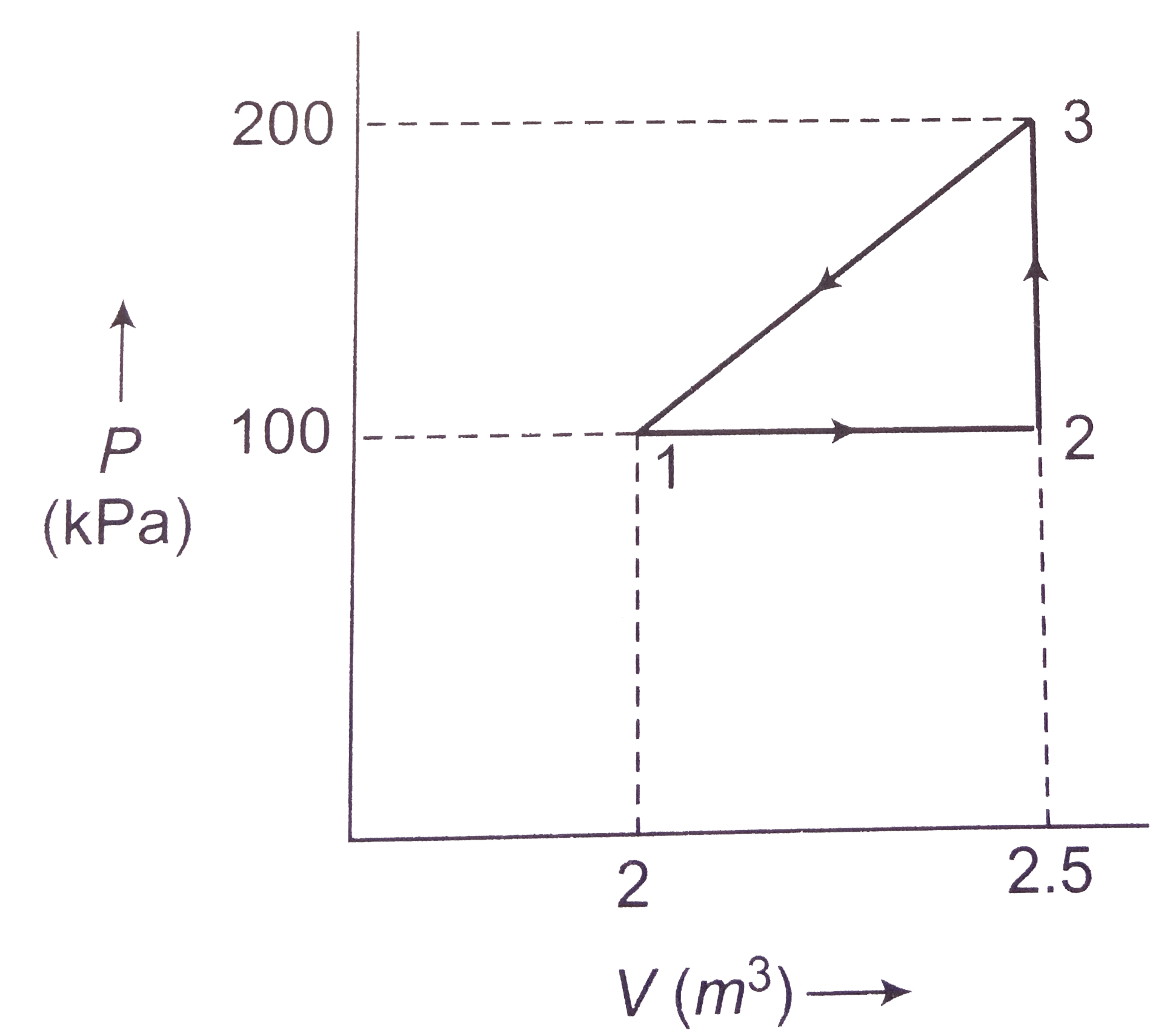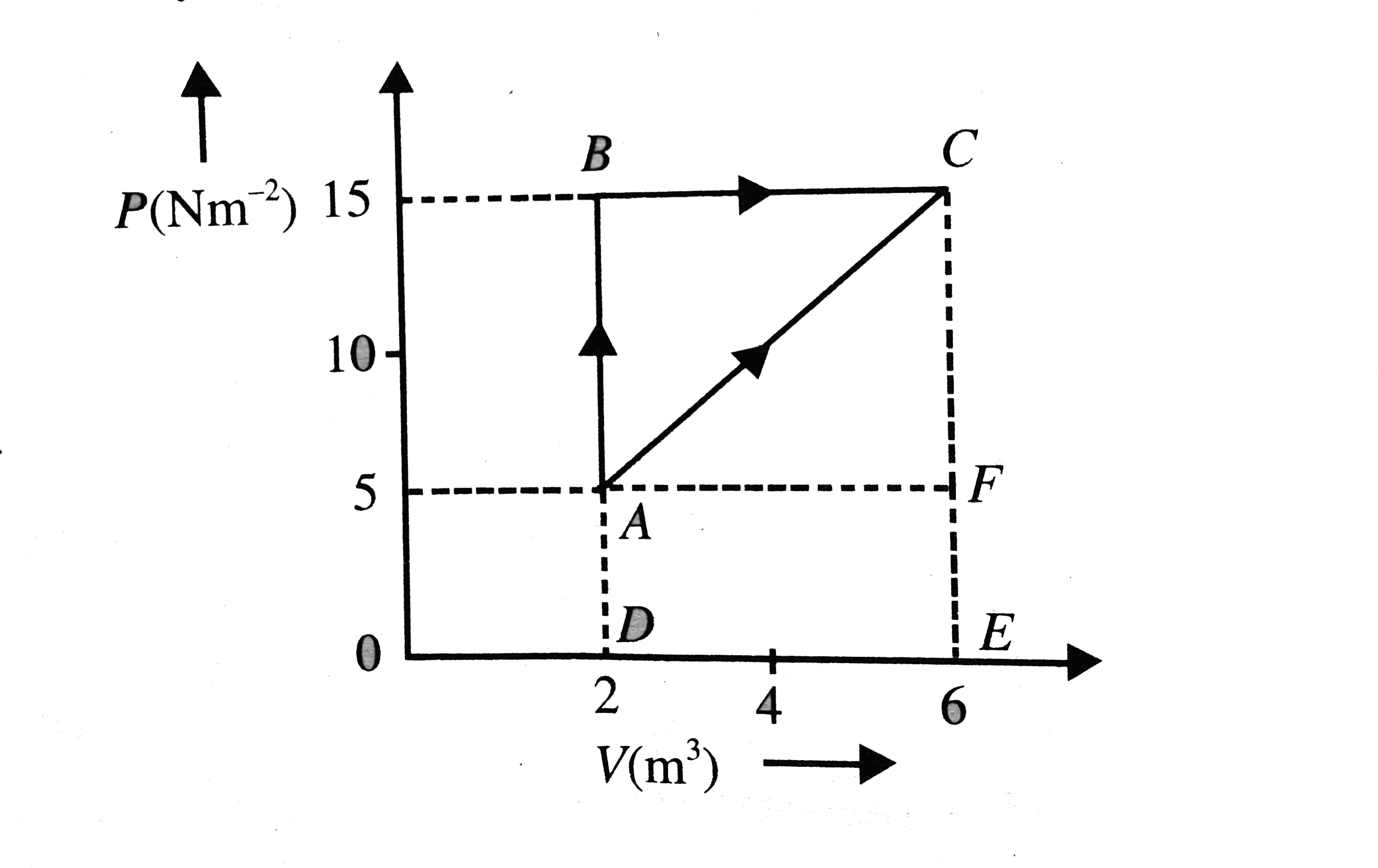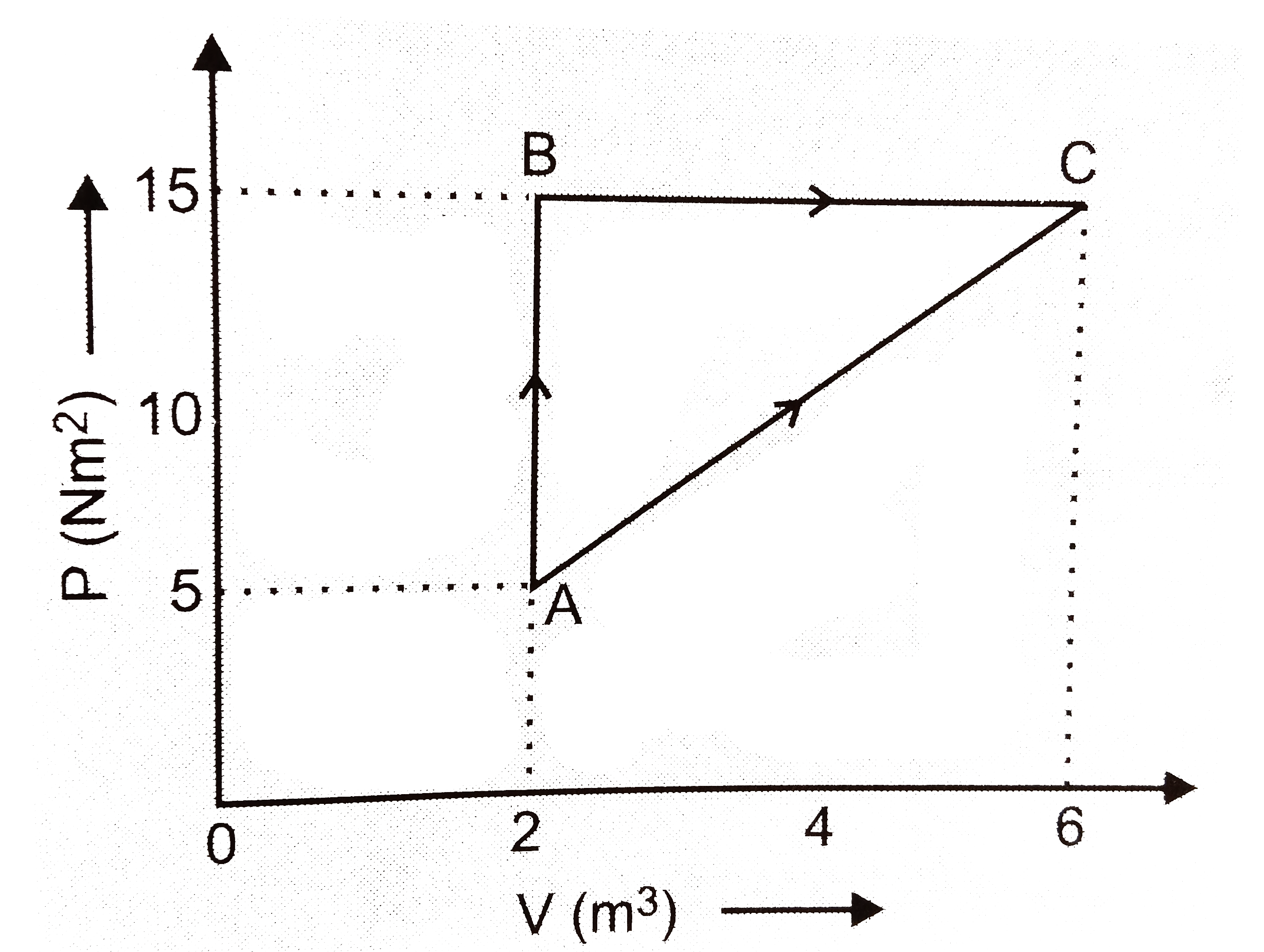In the given an ideal gas can change its state from A to C by two paths ABC or AC. Then

If the internal energy of gas 'A' is 10J and the amount of heat supplied in path AC is 200J, then the internal energy of gas at 'C' is 150J
If the internal energyof gas at 'A' is 10J and the amount of heat supplied in path AC is 200J, then the internal energy of gas at 'C'is 75J
If the internal energy of gas a state B is 20J. Then the amount heat supplied to the gas to go from A to B may be 5 Joule.
If the internal energy of gas at state B is 20J. Then the amount of heat supplied to the gas to go from A and B must be 10 Joule
The correct Answer is:A, D
In path A→C
dW=4×10+12×10×4+20=60J
dQ=dU+dW
200=Uc−UA+60
Uc=Uc−UA+60
Uc=140+UA=140+10=150J
In path A→B
QAB=UB−UA
=UB(1−UAUB)=UB(1−TATB)
=20(1−12)=10 Joule

Topper's Solved these Questions
- BOOK - FIITJEECHAPTER - TEST PAPERSEXERCISE - PHYSICS747videos
TEST PAPERS
- BOOK - FIITJEECHAPTER - SIMPLE HARMONIC MOTIONEXERCISE - Assignment Problems (Objective) (Level-II)20videos
SIMPLE HARMONIC MOTION
- BOOK - FIITJEECHAPTER - WORK, ENERGY AND POWER EXERCISE - COMPREHENSIONS ( Comprehension-II)5videos
WORK, ENERGY AND POWER
Similar Questions
In the given figure an ideal gas changes its state from A to state C by two paths ABC and AC.
_E01_269_Q01.png)
(i) Find the path along which work done is the least.
(ii) The internal energy of gas at A is 10J and amount of heat supplied to change its state to C through the path AC is 200J. Calculate the internal energy at C.
(iii) How much is the heat involved in the process ABC and ADC?View SolutionIn the given figure, an ideal gas changes it state from A to state C by two paths ABC and AC.
(i) Find the path along which work done is the least.
(ii) The internal energy of the gas at A to 10J and the amount of heat supplied to change its state to C through the path AC is 200J. Calculate the internal energy at C.
(iii) The internal energy of the gas at state B is 30J. Find the amount of heat supplied to the gas to go from A→B.
 View Solution
View Solution
Knowledge Check
- Question 1 - Select One
In the given figure, an ideal gas changes its state from A to C by four paths. The path for which work done is least, is
 AABCBAECCADEDAFC
AABCBAECCADEDAFC - Question 2 - Select One
Internal energy of an ideal gas changes with change in its
APressure onlyBVolume onlyCTemperature onlyDTemperature and pressure - Question 3 - Select One
In a isothermal change an ideal gas obey's
ABoyle 's lawBCharle's LawCGay -Lussac's LawDNone of these

In the figure an ideal gas changes is state from state A to state C by two paths ABC and AC.
(a) Find the path along which the work done is least.
(b) The internal energy of the gas at A is 10 J and the amount of heat supplied to change its state to C through the path AC is 200 J. Calculate the internal energy at C.
(c) The internal energy of the gas at state B is 20 J. Fid the amount of the heat supplied to gas to go from A to B.View SolutionFigure. Shows an ideal gas changing its state A to state C by two different path ABC and AC.
a. Find the path along which the work done is the least.
b. The internal energy of the gas at A is 10J and the amount of heat supplied to change its state to C through the path AC is 200J. Find the internal energy at C.
c. The internal energy of the gas at state B is 20J. Find the amount of heat supplied to the gas to go from state A to state B.
 View Solution
View SolutionThe given figure shown a change of state A to state C by two paths ABC and AC for an ideal gas. Calculate the :

(a) Path along which work done is least.
(b) Internal energy at C if the internal energy of gas at A is 10J and amount of heat supplied to change its state to C through the path AC is 200J.
(c) Amount of heat supplied ot the gas to go from A to B, if internal energy of gas at state B is 10J.View SolutionOne mole of an ideal monoatomaic gas is taken from A to C along the path ABC . The temperature of the gas at A is T0 . For the process ABC :
 View Solution
View SolutionIn an isothermal change, an ideal gas obeys
View Solution

